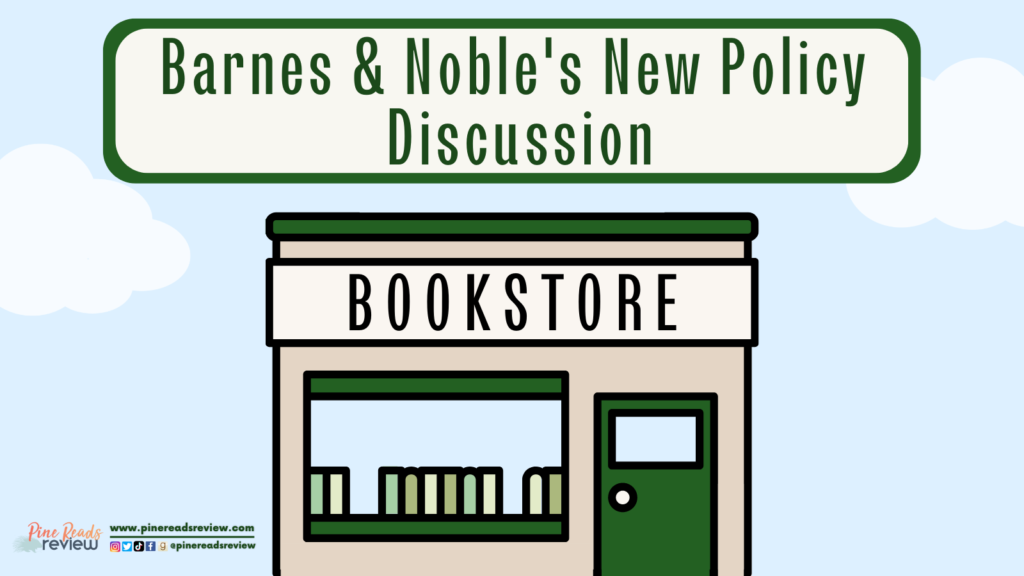
To many, Barnes & Noble is a valiant anachronism in this rapidly digitizing age, where people turn to Netflix instead of books for entertainment, and for those who do read, e-books and audiobooks reign supreme. And what isn’t there to love? Shelves upon shelves of glossy covers, the quiet ambiance that can only be found at a bookstore, perhaps even a Starbucks in the corner.
However, take a closer look at the books on display, and you might notice that something is not quite right.
A 2019 Barnes & Noble policy that limits its in-store stock of hardcover fiction has recently come to light after author Bethany Baptist’s critique of the practice on Twitter gained viral traction. CEO James Daunt states that the policy emerged from the returns of middle-grade hardcovers running as high as 80%, which he believes is a result of Barnes & Noble failing to thoughtfully curate its stores. This policy is meant to allow individual stores to stock fiction based on their booksellers’ tastes as a type of “empowerment.” He acknowledges that Barnes & Noble has “failed to support new voices and talents adequately for many years” and that this method of “exercising taste” is supposed to allow stores to “champion the best” to drive sales, but also, presumably, support diverse and debut authors.
While this sounds all well and good in theory, many marginalized and debut authors’ books are no longer being stocked in Barnes & Noble stores because of this policy, as Baptist explains. Dhonielle Clayton, author of The Marvellers, talked about her experience with Barnes & Noble―she went to five different bookstores and was told they could only stock five copies of The Marvellers, while there was a whole table dedicated to a white author’s debut. Even New York Times #1 bestselling author Kelly Yang’s newest novel Key Player will not be physically available in Barnes & Noble since, apparently, they are only stocking the top one or two authors per publisher. The company itself disagrees on this: “Every book is reviewed individually, agnostic of publisher or imprint, for the initial laydown,” a Barnes & Noble statement read. “If a publisher is having a strong month or season, we will bring them in. There is no predetermined amount of new releases for a particular time period, and certainly not a capped amount per publisher.”
Some Barnes & Noble booksellers have different experiences, however. Erin Haley, a former employee, reveals, “Booksellers need ‘approval’ to get books on shelves from someone who works in outside office. This hurts new authors and diversity the most.” Daunt has replied that all of these accusations, from many different booksellers and authors, are all false and that stocking and shelf-life of books are up to the judgment of the bookseller team.
The good news is that you can still order these books online at Barnes & Noble, and they will either be sent to your home or be available for pickup in-store. They just will not be in-store, which arguably impacts children’s and middle-grade lit the most since kids are more likely to browse the shelves and choose a book that interests them.
Shop local! Probably the best way to support authors and your community is to find bookstores nearby. You can do this through IndieBound, a collaboration between local bookstores and the American Booksellers Association. Purchasing through IndieBound works two ways: 1) direct purchase from the site which will support the entire network of independent booksellers and 2) enter your zip code into the “Shop Local” box. You will then have access to the websites of all your local booksellers, and you can make the purchase through them. You can also stroll around your community and take a look at what’s around! Check out this blogpost or our TikTok for local bookstores in Tucson.
Bookshop.org works similarly, but it connects you with bookstores all over the world. Since 2020, they have raised $22 million for independent bookstores.
Public Libraries! If you want to read a book completely free of charge, consider making a library card with your local library. Authors do receive royalties on books that libraries buy from their publishers, plus the exposure they get from libraries is really important, especially for children’s books (such as storytime events). Check out more of our thoughts on libraries here!
PRR Writer Aruna Sreenivasan